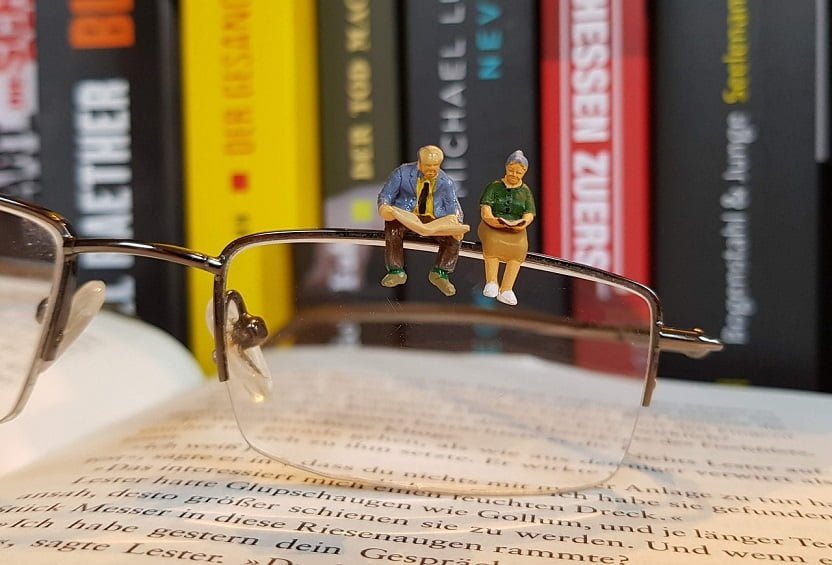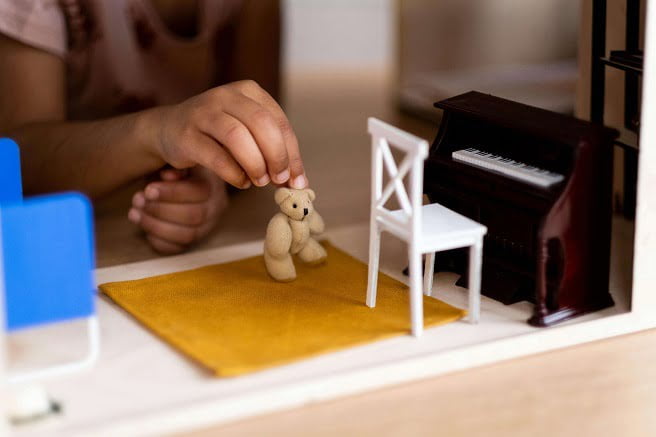Discover Semicrophilia: The Fascination with Miniatures in 2024

Semicrophilia is a relatively new term. A concept not widely known, relating to a strong interest or love for small objects. Based on the components of the term one can easily comprehend the concept.
- “Semi-” typically means half or partial.
- “Micro-” means small.
- “-philia” means an affinity or love for something.
These are small replicas of items, individuals, or settings, typically crafted with meticulous precision. Over the years, people of all ages have been fascinated by small versions of things such as dollhouses and model trains.
Table of Contents
The History of Semicrophilia
Miniatures have a rich and abundant history, tracing back to ancient times.
Ancient Times
In ancient Egypt, tiny statues and models were placed in tombs to go with the dead to the afterlife.
Middle Ages
Detailed miniature illustrations were a prominent feature in illuminated manuscripts from the Middle Ages.
Renaissance Period
In the Renaissance period, affluent people began to appreciate miniature portraits as a convenient way to carry pictures of their family members.
18th and 19th Centuries
During the 18th and 19th centuries, the elite became intrigued by dollhouses and miniature furniture, leading to their popularity among many people.

Why People Find Semicrophilia Fascinating?
People’s fascination with miniatures can be seen in various forms and has been a part of human culture for centuries. Here are some aspects and reasons why people might be drawn to miniatures:
Nostalgia and Childhood Memories
Many people are fond of miniatures due to their association with childhood toys like dollhouses, model trains, and action figures. These items often evoke memories of play and creativity.
Attention to Detail
Miniatures require a high level of craftsmanship and detail. People who appreciate intricate work and fine craftsmanship often find miniatures fascinating because they represent a smaller, meticulously detailed version of the real world.
Sense of Control
Miniatures can provide a sense of control over a tiny world. For some, arranging and creating miniature scenes or models can be a way to organize and manage a small-scale environment, offering a sense of order and predictability.
Artistic Expression
Many artists use miniatures as a medium for creative expression. Creating miniature sculptures or paintings allows for unique opportunities and challenges, enabling artists to explore different perspectives and scales.
Hobby and Collecting
Collecting miniatures can be a fulfilling hobby. Enthusiasts often enjoy the process of acquiring, building, and displaying their collections. Popular hobbies involving miniatures include model building (trains, airplanes, cars), miniature wargaming, and collecting miniature figurines.
Educational Value
Miniatures are often used in educational contexts to demonstrate concepts, historical events, or scientific principles on a smaller, more manageable scale. For example, architectural models, historical dioramas, and anatomical models serve as valuable teaching tools.
Fantasy and Imagination
Miniatures allow people to create and engage with fantastical worlds and scenarios. This can be particularly appealing in fantasy gaming (like Dungeons & Dragons) where miniatures help bring imaginative stories to life.
Cultural Perspective
Miniatures are of great importance in numerous cultures.
- In Japan, the practice of making miniature gardens, called “bonsai,” is widely respected and seen as a meditating and calming activity.
- Dollhouses and miniature villages are commonly viewed as delightful and sentimental in Western societies.

Misconception About the term Semicrophilia
There are some misunderstandings about the term “semicrophilia” that need to be clarified.
Confusion with Other Terms
One common misconception is that semicrophilia is synonymous with macrophilia (a fascination with giants) or microphilia (a fascination with tiny things). While these terms are related, they refer to different concepts within the realm of size fascination.
Psychological Disorder
One more misconception is that semicrophilia is considered a psychological disorder. In reality, interest in miniatures is just like any other hobby such as collecting stamps or coins
Limited to Dollhouses
Although dollhouses are commonly linked to semicrophilia, this term includes a wider variety of tiny items such as model trains, cars, and figurines.

Exclusively for Kids
Some think that a fascination with miniatures is solely reserved for children. Indeed, numerous grown-ups derive pleasure from the collection and creation of miniatures as a hobby or means of artistic expression.
Lack of Seriousness
There could be a misunderstanding that semicrophilia is a trivial or insignificant fascination. Nevertheless, for numerous fans, it serves as a profoundly significant and satisfying pastime that enables creativity, stress relief, and bonding with like-minded individuals.
Legal Considerations
Copyright Legislation
Even though it is usually legal to own and collect miniatures, it is important to consider certain legal factors. For instance, certain miniature pieces might be viewed as artistic creations and safeguarded by copyright legislation.
Censorship
Specific miniatures, like those showing violence or illegal actions, could be limited or censored in certain nations.
Application
Miniatures have practical applications beyond just being objects of fascination.
Architecture and Urban Planning
Architects and urban planners often use miniature models to visualize and plan buildings and cities.

Film Industry
Miniature models are also used in movie production to create realistic sets and special effects.
Real-Life Examples
Miniatures have left a lasting impression on popular culture through their appearance in movies, television shows, and literature. A significant instance is the film “The Grand Budapest Hotel,” helmed by Wes Anderson, showcasing intricate miniature sets that enhance the movie’s fantastical appearance.
Another instance is the small-scale village of Bourton-on-the-Water in England, drawing in visitors worldwide who are fascinated by its petite structures and roads.
Conclusion
In conclusion, semicrophilia, the fascination with small-scale models, is a captivating concept that has enchanted many. Miniatures spark creativity, evoke nostalgia, and offer a unique perspective on the world. They are a testament to human creativity and craftsmanship, captivating audiences of all ages. Next time you encounter a miniature world, take a moment to appreciate the skill and imagination behind it, and you may find yourself falling in love with miniatures too




Leave a Comment